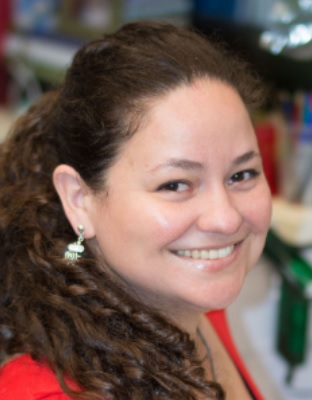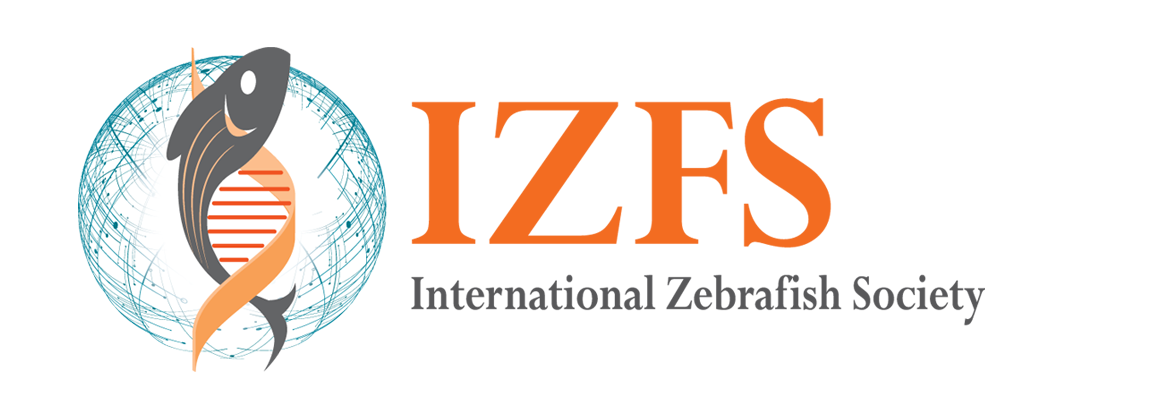Mid-Atlantic Regional (MARZ) Baltimore, MD
The recently renovated “Leadership Hall” auditorium of the University of Maryland School of Medicine in Baltimore was the most recent venue of the 2019 Spring Mid-Atlantic Regional Zebrafish Meeting, hosted and organized by Drs. Norann Zaghloul and Jim Du. Once again, this bi-annual meeting gathered zebrafish scientists at all academic levels from all over the east coast for a day of cool scientific interactions. Known to be a fantastic platform for trainees, this meeting was not the exception as we witnessed oral presentations given by graduate students, postdoctoral fellows and postbaccalaureates.
The afternoon began with an exciting seminar sponsored by the University of Maryland Stem Cell Center delivered by the keynote speaker Dr. Jessica Blackburn from the University of Kentucky. Using zebrafish as a model to study pediatric cancers such as T-cell acute lymphoblastic leukemias (ALL), Dr. Blackburn walked us through her recent findings on the role of PRL3, a phosphatase identified in a large-scale transplantation screen, and how her studies revealed that PRL3 contributes to the development of ALL and could represent a potential drug target for the treatment of this blood cancer.
The first session, chaired by Jessica Dunleavey, brought us first Beth Harvey from the Granato lab at UPenn who left us speechless with her beautiful work on optic nerve regeneration, where she finely transected the optic nerves of zebrafish to follow their regeneration post-embryonically into the optic tectum. Her findings not only highlight the remarkable regenerative capacities of zebrafish but also demonstrated differences in axonal growth patterns when comparing a complete and a partial transection. Taking it even further, she found that the glycosyltransferase Lh3 is required for properly directing axon regeneration during these stages of development. Next, Yunlu Zhu from the Kucenas lab at UVA talked about how during neural tube closure and spinal cord formation, apoptotic neural cells get cleared from the central and peripheral nervous systems. Using live imaging, Yunlu observed that multipotent migratory neural crest cells come in contact with, and phagocytose these dying neural cells, clearing the debris in the neural tube and spinal cord. The third talk came from Wuhong Pei from the Burgess Lab at the NIH where she studies how the Erbb pathway mediates hair cell regeneration in the posterior lateral line of zebrafish. Using a high-throughput CRISPR mutagenesis and screening pipeline, she identified genes encoding proteins in the SMN complex and how these genes regulate regeneration through an Erbb pathway-mediated cell proliferation. The last talk of the first session was presented by Marina Venero Galanternik from the Weinstein lab also at the NIH who talked about her research investigating the development and characterization of the brain enveloping layers known as the meninges, and the vascular-associated cells that populate this tissue. The first session ended with four exciting poster blitz talks that got us prepped for the afternoon poster session, vendor exhibits and coffee break.
Session II began by the welcoming words of the session chair Charles Williams who proceeded to introduce the first speaker, Christine Insinna from the Westlake Lab at the NCI who uses a novel imaging technique where she combines Correlative Light and Electron microscopy (CLEM) and Focused Ion Beam-Scanning Electron microscopy (FIB-SEM) to study ciliopathies caused by mutations in pacsin genes. The afternoon continued with Miranda Marvel from the Zohar Lab at UMBC, who showed us the roles of the Gonatropin-releasing hormone 2 (Gnrh2), an understudied but conserved neuropeptide in zebrafish feeding and reproduction. Using gnrh2 knockouts, Miranda showed that long-term starvation severely affected oocyte maturation in these mutants. Next, Joshua Weinreb from the Bowman Lab at Albert Einstein College talked about his research studying the effects of Ddx41 inhibition on the generation of hematopoietic progenitors, as flow cytometry and the hematopoietic precursor marker runx1 revealed that ddx41 mutants showed an increase number of HSPCs. We next learned about the roles of dynein transport in axons from Wesley Schnapp from the Drerup Lab at the NIH. Wesley uses the posterior lateral line axon to study dynein transport of mitochondria, an essential cargo for nervous system function. Her work is focusing on analysis of mutants affecting this transport. One of these mutants, actr10, an element of the dynein-dynactin complex, resulted in the accumulation of mitochondria in distal axons due to defects in retrograde transport. Following, Daria Lukasz from the Kindt Lab at the NIH told us more about sensory hair cells and how their synaptic activity could modulate susceptibility to aminoglycosides such as neomycin, a common antibiotic that kills hair cells. Measuring in vivo calcium activity of individual hair cells, she has found that some synaptically active hair cells may present a degree of resistance to neomycin. The last talk was delivered by Jessica Dunleavey from the hosting Zaghloul Lab. She investigates mutations of the alms1 genes, known to be the cause of Altrom syndrome, which among many conditions characterizes for the early onset of type 2 diabetes (T2DM). Jessica is using alms1 zebrafish mutants to study T2DM, and has found that these animals recapitulate known clinical conditions that include, but are not restricted to, changes consistent with insulin hypersecretion and glucose sensing failure.
After thanking all the speakers and attendees for yet another successful MARZ meeting, we were asked to mark our calendars as the next MARZ meeting will come back to the Natcher Conference Center at the NIH on November 1st, 2019, and will be hosted by Katie Drerup and Katie Kindt. In closing, we all proceeded to the atrium for dinner, where we were surprised by a wonderful Indian and Chinese buffet to complete the meeting with camaraderie and final scientific discussions.
 Contributor:
Contributor:
Marina Venero Galanternik
Postdoctoral Fellow, Weinstein Lab
NICHD, NIH
@vg_biomarina




